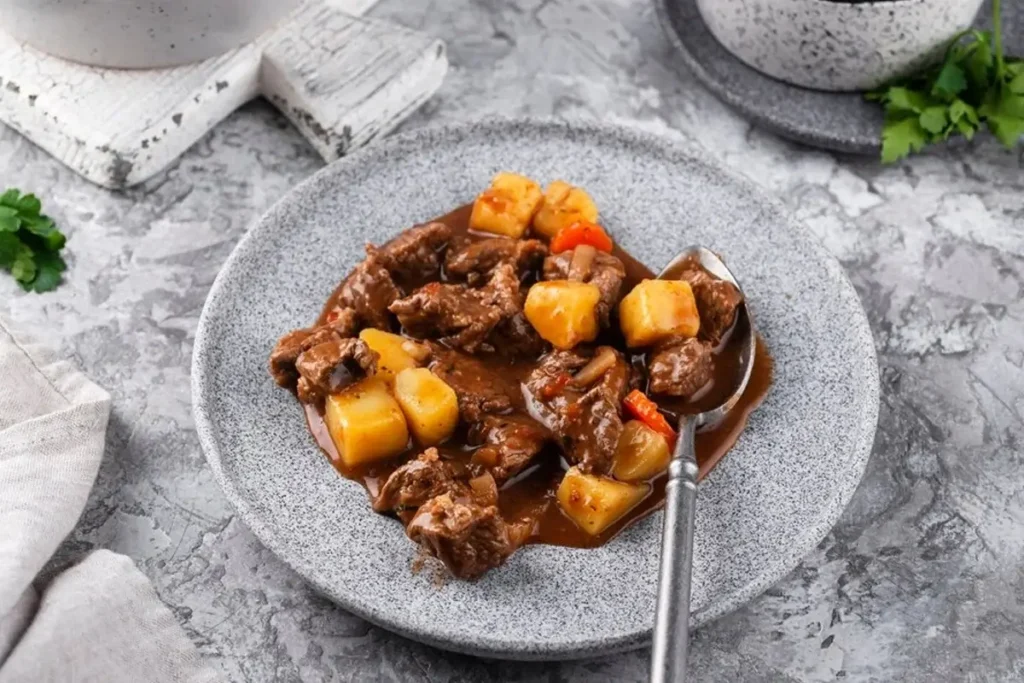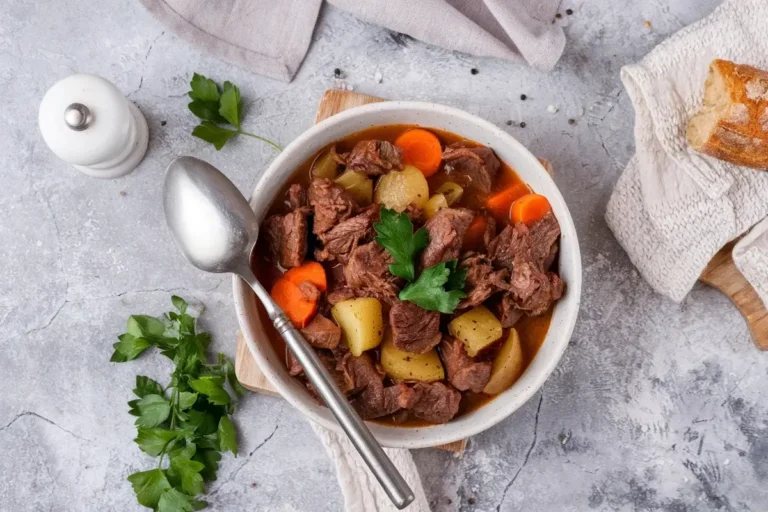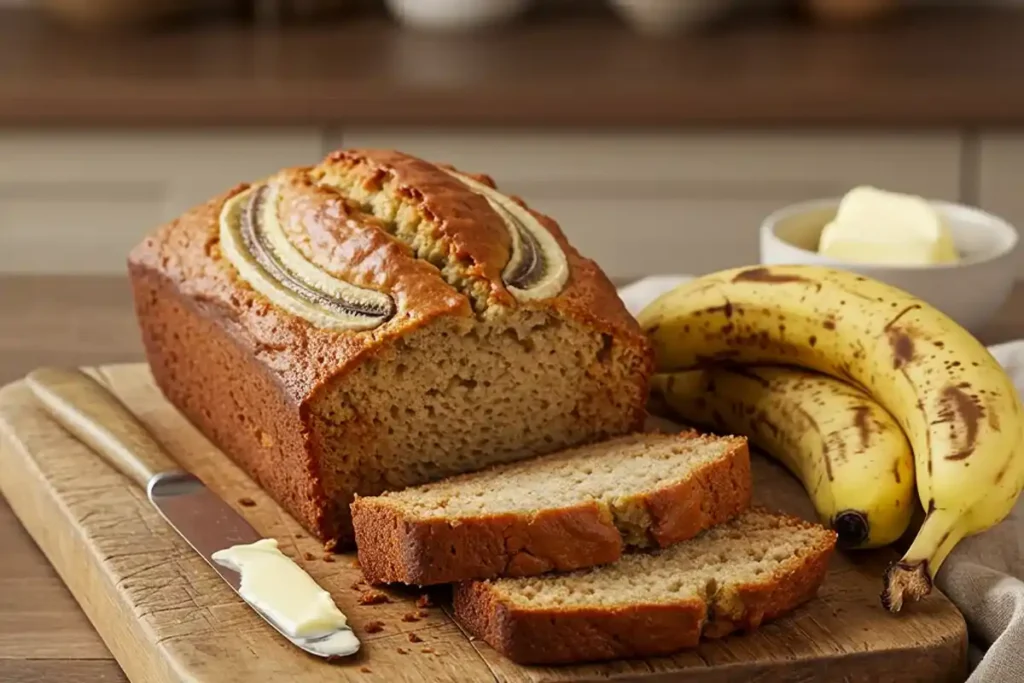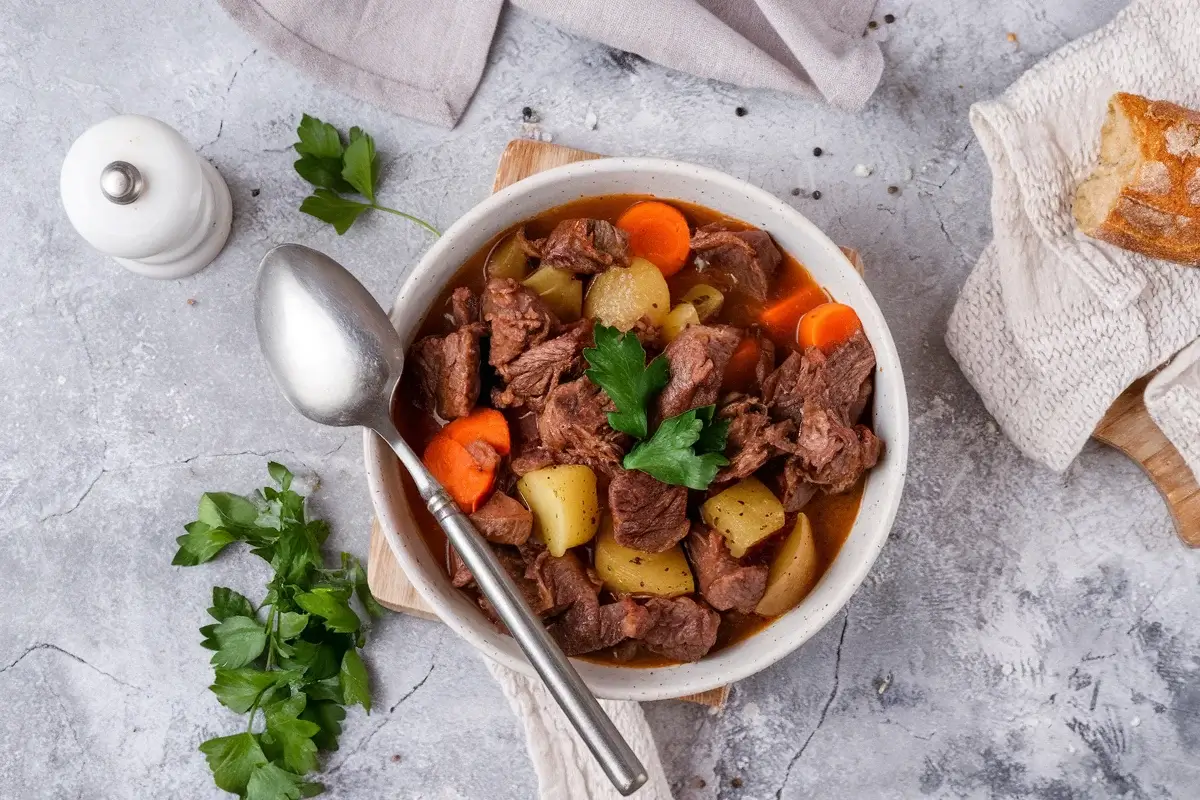Beef stew is more than just a comforting classic—it’s a canvas for culinary creativity. Whether you’re a seasoned chef or a home cook, the right beef stew seasoning can transform a simple dish into an unforgettable masterpiece. In this article, we’ll dive deep into the art of seasoning beef stew, covering everything from understanding key ingredients to creating your custom blends. You’ll also explore regional variations, common mistakes to avoid, and answers to frequently asked questions.
Let’s begin our flavorful journey by exploring what makes beef stew seasoning so special.
Understanding Beef Stew Seasoning
What Is Beef Stew Seasoning?
Beef stew seasoning is a carefully crafted mix of herbs and spices designed to bring out beef and vegetables’ rich, hearty flavors. It acts as the backbone of this dish, adding depth, aroma, and complexity. Historically, seasoning blends evolved from regional preferences, with cooks using locally available spices to enhance the stew’s taste.
But what makes a seasoning mix truly shine? Balance. A good blend harmonizes savory, sweet, and sometimes even spicy elements, making each bite an experience.
Common Ingredients in Beef Stew Seasoning
A classic beef stew seasoning typically includes a combination of:
- Thyme, rosemary, and bay leaves are staples for their earthy and fragrant profiles.
- Spices: Black pepper, paprika, and sometimes cumin for warmth and mild heat.
- Aromatics: Garlic and onion powder lend a savory base to the seasoning.
Each ingredient plays a specific role. For instance, thyme and rosemary elevate the beef’s natural flavors, while paprika adds a subtle smokiness. Want a slightly sweeter profile? Nutmeg or cinnamon can create a delightful twist.
The Science Behind Seasoning Beef Stew
Seasoning is both an art and a science. It doesn’t just flavor the stew; it interacts with the ingredients at a molecular level.
- Tenderizing the Meat: Salt draws out moisture, enhancing juiciness and tenderness.
- Flavor Infusion: Spices dissolve in the broth, coating the beef and vegetables evenly.
- Balancing Acidity: Seasonings’ savory, grounding quality benefits ingredients like tomatoes or wine in beef stew.
Understanding these dynamics helps you tweak recipes to suit your taste. For example, if your stew feels flat, a pinch of salt or a dash of beef stew seasoning can amplify its flavor.
Crafting Your Beef Stew Seasoning Blend (700 words)
Essential Components of a Homemade Seasoning Mix
Creating your beef stew seasoning allows you to tailor flavors to your liking. A well-rounded blend typically includes:
- Herbs: Dried rosemary, thyme, and oregano provide earthy notes.
- Spices: Paprika adds warmth, while black pepper offers subtle heat.
- Aromatics: Onion and garlic powders contribute a savory depth.
- Thickening Agents: Flour or cornstarch can help thicken the stew.

For instance, a balanced mix might consist of 2 tablespoons each of onion and garlic powder, 1 tablespoon of salt, 2 teaspoons of paprika, and 1 teaspoon each of dried thyme, rosemary, and oregano. This combination enhances the stew’s richness without overpowering the natural beef flavor.
Want more seasoning tips? Visit our Essential Spices and Herbs for Your Pantry to discover other spices that will elevate your dishes.
Step-by-Step Guide to Creating a Custom Blend
- Measure Ingredients Accurately: Use measuring spoons to ensure consistency.
- Combine Thoroughly: In a bowl, mix the measured herbs and spices until well integrated.
- Store Properly: Transfer the blend into an airtight container, like a mason jar, and label it with the date. Store in a cool, dark place to maintain freshness.
When preparing your stew, use approximately 2 tablespoons of the seasoning per pound of beef. This ratio provides a flavorful base without overwhelming the dish.
Adjusting Seasoning for Dietary Preferences and Restrictions
Customizing your beef stew seasoning ensures it aligns with dietary needs:
- Low-Sodium: Reduce or omit added salt; enhance flavor with additional herbs like basil and parsley.
- Gluten-Free: Substitute flour with cornstarch or gluten-free flour alternatives to maintain thickness without gluten.
- Sugar-Free: Omit any sweeteners if you’re monitoring sugar intake.
By adjusting these components, you create a seasoning blend that caters to health considerations without compromising on taste.

Incorporating Seasoning into Your Beef Stew
Best Practices for Seasoning Beef Stew
To maximize the impact of your beef stew seasoning:
- Timing: Season the beef chunks before browning to infuse flavor from the start. Additionally, add more seasoning during the simmering process to deepen the taste.
- Methods: Apply the seasoning as a dry rub on the beef to create a flavorful crust when seared. Alternatively, dissolve the seasoning in the broth for an even distribution throughout the stew.
This dual approach ensures that every bite is rich and savory.
Enhancing Flavor with Additional Ingredients
Beyond the seasoning blend, consider incorporating:
- Vegetables: Carrots, potatoes, and celery not only add nutrition but also absorb and enhance the stew’s flavors.
- Aromatics: Sautéed onions and garlic introduce a robust base, complementing the seasoning.
- Broths and Liquids: Using beef broth or adding a splash of red wine can elevate the stew’s depth, harmonizing with the seasoning mix.
These additions work in tandem with your seasoning to create a well-rounded and hearty dish.
Explore our Comfort Food Classics: Top 10 Dinner Recipes for more hearty meal ideas that pair perfectly with beef stew.
Common Mistakes to Avoid
To ensure your beef stew turns out perfectly:
- Over-Seasoning: Excessive seasoning can overpower the natural flavors. Start with a moderate amount; you can always add more if needed.
- Under-Seasoning: Conversely, too little seasoning results in a bland stew. Taste as you cook and adjust accordingly.
- Imbalance of Flavors: Ensure that no single spice dominates. A harmonious blend is key to a delicious stew.
By being mindful of these common pitfalls, you can craft a beef stew that’s both flavorful and satisfying.
For more on enhancing your stews, check out our Homemade Seasoning Blends for Every Dish for creative ways to season all your meals.
Frequently Asked Questions about Beef Stew Seasoning
What Spices Are Best for Beef Stew?
The best spices for beef stew are those that enhance the beef’s natural flavor while adding depth and complexity. Common options include:
- Paprika for subtle warmth and color.
- Thyme and rosemary for an earthy, herbal aroma.
- Black pepper for a gentle heat.
- Garlic and onion powders for a savory base.
For a unique twist, you can experiment with nutmeg, allspice, or even a hint of cinnamon.
How Can I Thicken My Beef Stew?
There are several ways to thicken your stew while keeping the seasoning intact:
- Flour or Cornstarch: Mix with a small amount of water or broth before adding to the stew.
- Potatoes: Mash a few cooked potatoes and stir them back into the stew.
- Arrowroot or Tapioca Starch: These gluten-free options work well as thickening agents.
Thickening your stew ensures the seasoning coats every bite, intensifying the dish’s flavor.
Can I Use Pre-Made Seasoning Mixes?
Absolutely! Pre-made blends can save time and still deliver great flavor. However, check the label for added salt or artificial ingredients. Brands often include extra sodium, so adjust the salt in your recipe accordingly. If possible, opt for natural or organic blends.
How Do I Fix an Over-Seasoned Stew?
If your beef stew tastes too salty or over-seasoned:
- Dilute: Add more broth or water to balance the flavors.
- Sweeten: A pinch of sugar or a splash of cream can offset excess seasoning.
- Neutralize: Toss in a raw potato and let it cook; it’ll absorb some of the seasoning.
Is It Necessary to Marinate Beef Before Making Stew?
While not mandatory, marinating beef can enhance flavor and tenderness. A marinade with oil, vinegar, and some beef stew seasoning works wonders. Marinate for 1-2 hours for the best results, but even 30 minutes can make a difference.
What Can I Add to Beef Stew for Flavor?
To enhance the flavor of your beef stew, consider adding:
- A splash of red wine or balsamic vinegar for acidity and depth.
- Tomato paste to amplify umami and richness.
- Fresh herbs like parsley or thyme are added at the end for a burst of freshness.
- Miso paste or soy sauce for a subtle savory boost.
These additions complement the beef stew seasoning and elevate the overall taste.
Which Spices Are Good for Stew?
The best spices for stew are those that balance warmth and aroma. Popular choices include:
- Paprika for smokiness and color.
- Cumin for earthy depth.
- Coriander for a hint of citrusy sweetness.
- Bay leaves for a subtle, layered flavor.
When paired with staples like salt and black pepper, these spices bring out the stew’s hearty character.
What Is the Secret Ingredient in a Stew?
A secret ingredient can transform your stew into a standout dish. Some surprising options include:
- Dark chocolate or cocoa powder: Adds richness and complexity without tasting sweet.
- Anchovy paste: Dissolves into the stew, delivering an umami punch.
- Parmesan rind: Simmered in the broth, it infuses the dish with a nutty, salty flavor.
These unique ingredients work subtly to enhance the beef stew seasoning.
What Is the Best Herb for Beef Stew?
While a combination of herbs is ideal, thyme is often considered the best herb for beef stew. Its earthy, slightly minty flavor complements the richness of the beef perfectly. Rosemary, with its robust pine-like aroma, is another excellent choice. Adding fresh parsley at the end brightens the dish.
What Is the One Ingredient Upgrade for Better Beef Stew?
One game-changing upgrade is bone broth instead of regular stock. The natural collagen in bone broth thickens the stew and adds unmatched depth and flavor. If bone broth isn’t available, a splash of Worcestershire sauce or fish sauce can deliver a similar richness.
What Not to Put in a Stew?
To avoid overpowering or ruining your stew:
- Avoid too much salt early on: The flavors concentrate as the stew cooks. Season gradually.
- Skip delicate vegetables: Greens like spinach or zucchini turn mushy when cooked for long periods.
- Stay away from overly strong spices: Too much clove or cinnamon can dominate the flavor profile.
By keeping these tips in mind, your beef stew seasoning will shine without distractions.
Conclusion:
Beef stew is more than just a comforting meal—it’s an opportunity to explore bold flavors and culinary creativity. With the right beef stew seasoning, you can transform simple ingredients into a dish that’s hearty, satisfying, and memorable. From understanding the essential herbs and spices to crafting your blends and mastering the timing of seasoning, each step brings you closer to stew perfection.
Don’t forget to experiment with unique additions like a splash of wine, a touch of miso paste, or even a pinch of cocoa powder to take your stew to the next level. By avoiding common mistakes and personalizing the recipe to suit your preferences, you can create a beef stew that’s uniquely yours.
Whether you’re cooking for a cozy family dinner or impressing guests, the secret to an unforgettable beef stew lies in the balance of flavors—and the seasoning is the star. So, grab your pot, gather your ingredients, and let your beef stew seasoning do the magic. Bon appétit!
This unadulterated Beef Stew Seasoning such a gem, and if you have attempted it, it would be highly appreciated if you could drop a comment with stars to let me know how it turned out for you! It gives me joy to hear from you – it encourages me to come up with more and more recipes for you guys😊 Ready, steady, cook! – Emily

Beef Stew Seasoning Made Simple: Tips, Recipes, and Flavor Secrets
Beef stew is a hearty and comforting dish, perfect for cold weather. This recipe features tender chunks of beef, vegetables, and a rich broth, seasoned with aromatic herbs and spices that bring out the deep flavors of the beef. It’s a perfect one-pot meal that’s both satisfying and easy to prepare.
- Total Time: 2 hours 15 minutes
- Yield: 6 servings 1x
Ingredients
- 2 lbs beef stew meat (chuck roast or sirloin, cut into 1-inch cubes)
- 4 cups beef broth (low sodium recommended)
- 3 large carrots, peeled and sliced
- 3 medium potatoes, peeled and cut into chunks
- 1 large onion, chopped
- 2 cloves garlic, minced
- 1 cup celery, chopped
- 2 tablespoons olive oil (for browning)
- 1 teaspoon dried thyme
- 1 teaspoon dried rosemary
- 1 bay leaf
- 2 tablespoons Worcestershire sauce
- 2 tablespoons tomato paste
- 1 teaspoon paprika
- 1 teaspoon black pepper
- 1 tablespoon salt (adjust to taste)
- 1/4 cup flour (optional, for thickening)
- 1/2 cup water (for flour mixture)
- Fresh parsley (optional, for garnish)
Instructions
- Brown the Beef: Heat 1 tablespoon of olive oil in a large Dutch oven or heavy pot over medium-high heat. Add the beef stew meat in batches to avoid overcrowding. Brown the beef on all sides (about 5-7 minutes). Remove the browned beef and set it aside.
- Sauté the Vegetables: In the same pot, add the remaining olive oil. Sauté the chopped onion, garlic, carrots, celery, and potatoes for about 5 minutes until the vegetables soften.
- Add the Seasonings and Liquids: Stir in the tomato paste, Worcestershire sauce, paprika, thyme, rosemary, bay leaf, salt, and pepper. Mix well to coat the vegetables. Add the browned beef back into the pot. Pour in the beef broth and bring to a boil.
- Simmer the Stew: Once the stew reaches a boil, reduce the heat to low, cover, and let it simmer for 1.5-2 hours, or until the beef is tender and the flavors have melded together.
- Thicken the Stew (optional): If you prefer a thicker stew, make a slurry by combining 1/4 cup flour and 1/2 cup water. Stir the mixture into the stew and cook for another 10 minutes to allow it to thicken.
- Taste and Adjust Seasoning: Taste the stew and adjust the seasoning with more salt and pepper if necessary.
- Serve: Remove the bay leaf and serve hot. Garnish with freshly chopped parsley, if desired.
Notes
- Beef Choice: For the most tender stew, choose cuts of beef with a little marbling, like chuck roast.
- Low and Slow Cooking: Cooking the stew on low heat helps tenderize the meat and infuse the flavors over time.
- Vegetarian Option: You can substitute beef with mushrooms or a plant-based meat alternative for a vegetarian version.
- Prep Time: 15 minutes
- Cook Time: 2 hours
- Category: Dinner
Nutrition
- Serving Size: 1 bowl (about 1 1/2 cups)
- Calories: 350
- Sugar: 6g
- Sodium: 800mg
- Fat: 18g
- Saturated Fat: 5g
- Unsaturated Fat: 12g
- Carbohydrates: 30g
- Fiber: 5g
- Protein: 22g
- Cholesterol: 65mg
Keywords: beef stew, beef stew seasoning, hearty beef stew, homemade beef stew, easy beef stew recipe, comforting stew, one-pot meal, beef stew ingredients, savory beef stew, winter stew recipe
You’ll also like
- Banana Bread Recipe with 2 Bananas

- Delicious Churro Cheesecake Bars Recipe – Easy Dessert Delight!

- Sure Jell Recipes: How to Make Perfect Jams & Jellies

- Delicious Steelhead Trout Recipe: A Flavorful Guide

- Ultimate Peach Crumble Recipe: Sweet & Crunchy Delight

- Easy Step-by-Step Brioche Loaf Recipe for Perfect Breakfast Bread


